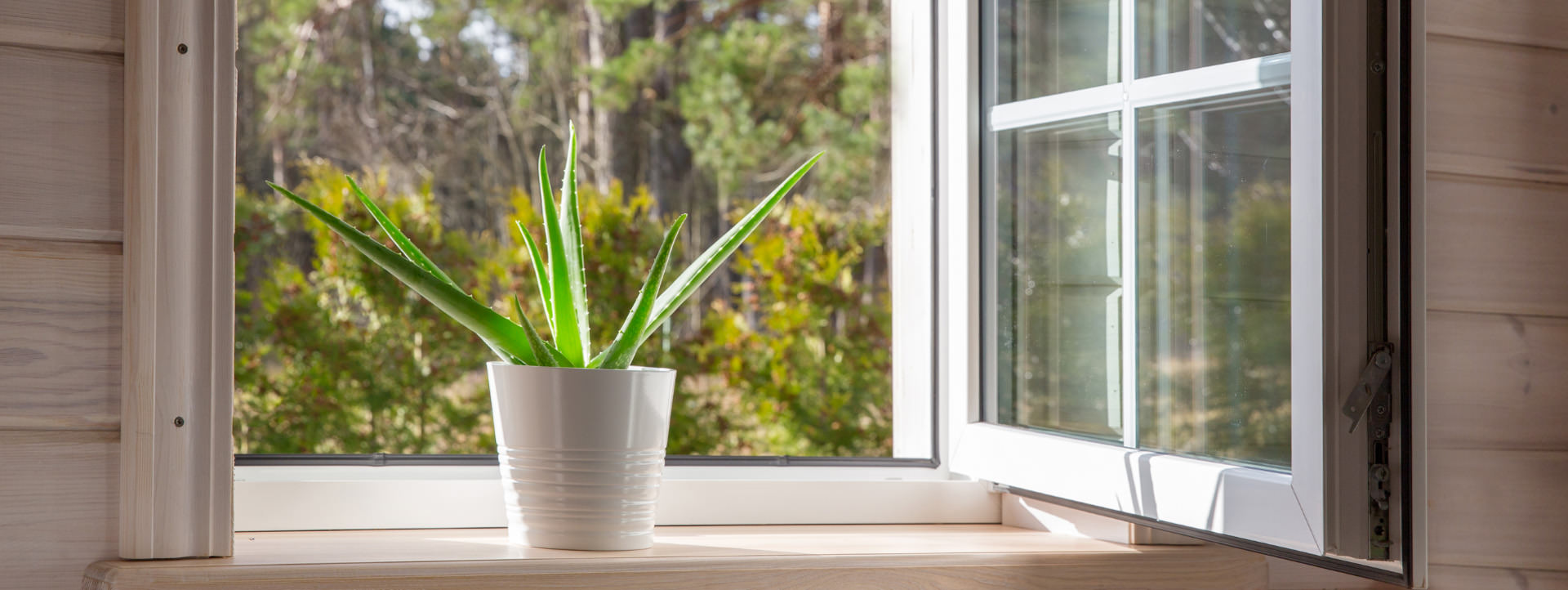
Timber - PVC - Aluminium - Windows, Doors & Conservatories in Hampshire
Building homes that don’t overheat
Building homes that don’t overheat
In the grand scheme of British summers, the summer of 2022 has not been too bad. However, as it continues to warm up, the climate statistics are becoming more alarming. In the South of England, the Environment Agency reported “June was the fourth consecutive month of below average rainfall. There was 64% of the long-term average rainfall for the South-east of England with an average of 19 ‘dry’ (<0.2mm rainfall) days during the month. The low rainfall resulted in below average recharge and the soil moisture deficits have increased steadily throughout the month. River flows and groundwater levels have fallen at all the key indicator sites across the South-east of England, as is expected at this time of year. In addition, there were no fluvial flood alerts issued. Reservoir storage also fell at most sites and ended the month below the long-term average for June”
As I write this article in July, we have just hit record temperatures, hitting over 40 degrees C for the first time ever in the UK. As anyone sweltering in the current UK heatwave can attest, the vast majority of the country’s housing stock is woefully unsuited to heat. Much of it is old, dating from an era when properties were built to protect from the cold and rain. Most new-build properties are similarly unready for weather predictions that, by the middle of the century, there will be temperatures on the level of summer 2022’s highs far more often.
The climate change committee warned in a report last year that more than 570,000 residences had been constructed since 2016 that were not resilient to high temperatures – and nor were a further 1.5m due to be built over the next five years.
Overheating is a serious problem, as vulnerable people struggle to keep cool in their homes. The government committee noted that 2020’s heatwave in England killed more than 2,500 people, and will continue to rise at an alarming rate.
Heat can affect the structural integrity of buildings, causing walls to crack. Before the heatwave of 2022 in 2018 the joint hottest UK summer alongside 1976, 2003 and 2006 – there was a spike in subsidence as the soil below buildings dried out and contracted, with more than 10,000 households subsequently making insurance claims worth £64m in just three months. Source Guardian newspaper
So how can our construction industry and country respond to the growing threat posed by high temperatures?
Retrofitting old properties to make them more efficient
The easiest way to keep a house cool is to install air-conditioning, something I personally did a few months back in my modest three-bedroom house. The ground floor reception/kitchen being mainly open plan meant one unit down stairs and one unit upstairs for our bedroom (the kids have left home). The cost for this including the electrical work was in the region of £2500. My home is triple glazed but relies on oil central heating to keep it warm. The new a/c units will help with keeping the house warm as well during the colder months. The modern units are very efficient and relatively cheap to run. This of course is not a solution for us all, but I did feel like a lottery winner during the extreme heat.
Designing out heat in our homes
When you are presented with a blank canvas and starting a new build there are even more effective measures that you can introduce at the planning and construction stage. These can include ensuring the house and windows are oriented and positioned to limit exposure to direct sun, reducing the amount of solar-gain through windows by regulating their size, adding shady trees, using an energy efficient air source heat pump, which can be used to cool a home as well as heat it. Houses in the hotter areas of the world normally have smaller inward opening windows with external shutters, something we could adapt in the UK.
Is Passive House the answer to the problem?
During the hot weather, I noticed that social media was buzzing with posts that Passive homes are able to self-regulate their own temperature at a steady 20-21 degrees.
If you did not know, Passive House construction is an incredibly efficient low-energy standard of building that is highly insulated, because of this the temperature throughout the year remains close to constant. It’s more expensive than building standard 'new-build' homes, but their ability to maintain a regular temperature means energy usage is very low compared to a regular home and the inside climate is far more comfortable.
My big problem with modern society is most things are built down to a price, not always to a quality or high standard. The throwaway or 'that wil do' nature of the 21st century just continues. Building all new homes to a Passive House standard costs much more than the current standard required for ‘conventional’ new homes. Large house builders will lobby government, to make sure that any suggestion of integrating Passive House standards into the mass market will never succeed. How much longer can we let this continue? That said, Barratt Britain’s largest housebuilder are developing the ‘Zed House’, a zero carbon concept home built in partnership with others from the construction industry and the University of Salford. It uses an air source heat pump for heating and cooling the home. It also has 95 sensors to gather data around the home, including on air quality. Barratt claims the pilot is the first step towards achieving its pledge that all of its new homes will be zero carbon by 2030. Let’s hope this is true, although Im sure we could move quicker with energy saving measures and better insulation.
I would like to see an effort to make building your own home easier. We need to encourage self-builders to go down the Passive House, high efficiency route. We need more education in this area, as well as specific Passive House mortgages and a supply chain that self-builders can tap into to make it simpler to find the materials and services they need.
Simple tips for keeping your house cooler if its over-heating
- Keep your windows, doors, blinds and curtains closed during the day. If the air temperature outside is higher than inside then all you are doing is letting the heat in.
- Block the heat coming in – shade external windows and walls with awnings, blinds, or deciduous trees to shade your home in the summer.
- Energy saving lamp builds do not produce heat – so make sure all light fittings are modern and efficient. Incandescent light bulbs are surprisingly inefficient. In fact, they give off up to 90% of their energy as heat…not light
- When the evening air temperature drops below the temperature inside the home, this is the time to open windows and doors to provide maximum cross ventilation. This means opening windows at opposite sides of the house or room and keeping doors open so the air can move through freely.
- Electric fans should be used at a low level pointing up as heat rises, the coolest air in your house is going to be at floor level.
- If you need to cool you house quicker you could place a bowl of ice and cold water in front of your fan’s blades, so as the air blows across the iced water it will be cool. You can also use some of this ice to put in your ‘hot water bottle’ for a ‘cool water bottle’. Filling it with water and putting it in the freezer a few hours before bedtime will keep you cool in bed. You will need to rap it in a towel as its likely to condensate in warm weather.
- A cold shower before bed, can cool you off nicely.
- Finally as a glazing company owner, well insulated windows, including our market leading 44mm triple glazing will keep the heat out in the summer and keep you warmer in the winter. This obviously also applies to wall and loft insulation.
After the recent heat extremes, with images of homes burning down in across the country, I do hope that we all take what is happening in front of our eyes very seriously, both on new builds for the future and climate change.
You can also view my Blog article from 2018 – Glazing hot summers and over-heating homes
- The 2026 Glazing Outlook” – High-level summary of the pivot to growth. - 9 December 2025
- Industry News: The Future Homes Standard 2025 & What It Means for Your Windows - 1 December 2025
- KJM Group MD Attends House of Commons Event to Champion UK Glass Industry - 14 November 2025













